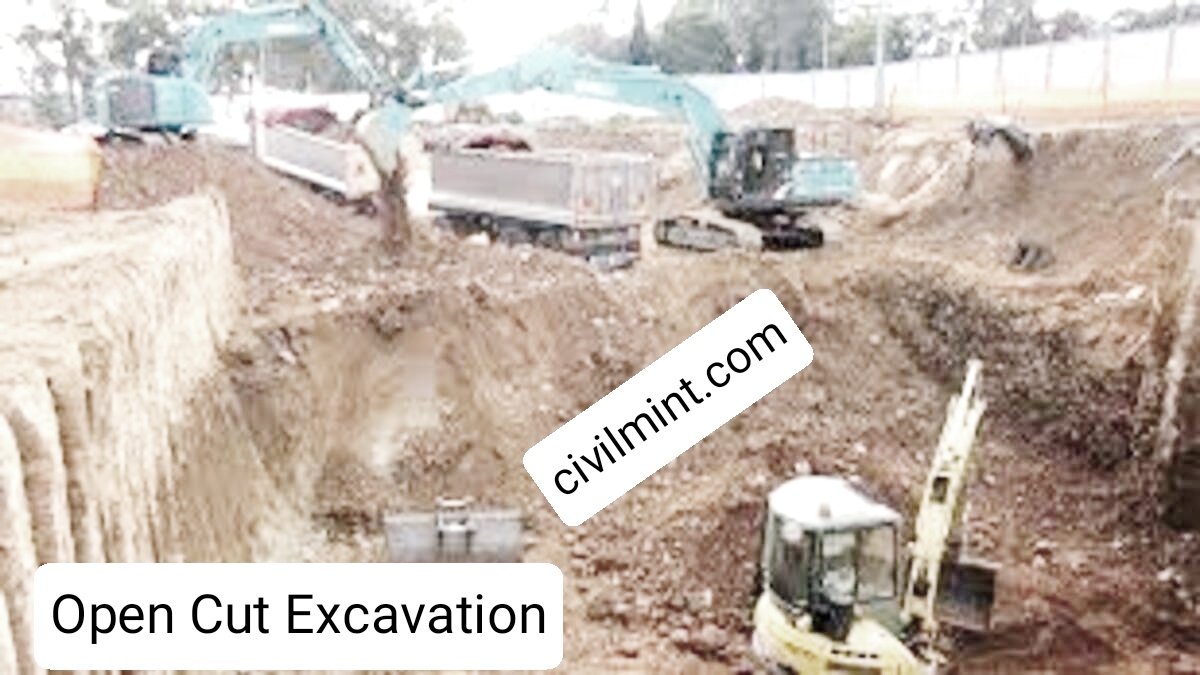Table of Contents
What Is Open Cut Excavation?
Open cut excavation is a way to dig a big hole in the ground at the start of building something. The big hole is where the building will be built on. If the building will have a basement, then the hole will be deep enough to fit the basement too.
There is another way to build, called the top-down construction method. This way, workers start by digging a vertical hole for the foundation walls, and then they build upwards. They dig the basement later on.

With open cut excavation, workers dig the hole for the basement first, and then they build the rest of the building on top of it. It’s like building from the ground up.
Types Of Open Cut Excavation
There are 2 types of open cut excavation as listed below.
- Open cut slope excavation
- Open cut cantilevered excavation
We will learn about these methods of open cut excavation.
1. Open cut slope excavations
Open cut slope excavation is a highly economical method of basement excavation. This process involves digging earth in an area around a building’s foundation walls and creating a slope that extends from the ground level away from the building and descends towards the foundation’s base. The slope is formed by utilizing the excavated earth, and it eliminates the need for retaining walls. Therefore, this method of excavation is more cost-effective than other techniques.
2. Open cut cantilevered excavation
The cantilevered excavation technique involves excavating soil before the commencement of construction. However, unlike the slope method, this approach necessitates the use of retaining walls. These walls permit the construction of deeper basements and prevent groundwater from flooding the construction site. Nevertheless, incorporating retaining walls into the construction plan incurs additional expenses and increases the overall duration of the project.
Open-cut excavation is a basement excavation method that has both advantages and disadvantages.
Advantages of Open-Cut Excavation
- Open-cut excavation can be combined with anchors or braces to build significant buildings with multi-level basements. It is more flexible than other excavation methods, and it can be used for both shallow and deep basements.
- Open-cut excavation is less expensive than other basement excavation methods because it requires less complex structural engineering forms. This means that you don’t need to spend money on expensive retaining walls.
- With the cut and cover method, it is easy to cover up the excavated hole.
Disadvantages of Open-Cut Excavation
- Not all land plots are suitable for open-cut excavation. Facilities on slopes may need an anchor and creative foundation system to secure them properly.
- Some sites may have high water tables, and open-cut excavation may cause groundwater to seep into the foundation. This can be a serious problem, and it may require comprehensive systems to prevent it.
- Open-cut excavation is slower than top-down construction. This can be a problem for urban commercial developers who want simultaneous and speedy construction, but it may not be an issue for homeowners who have more time and flexibility.
